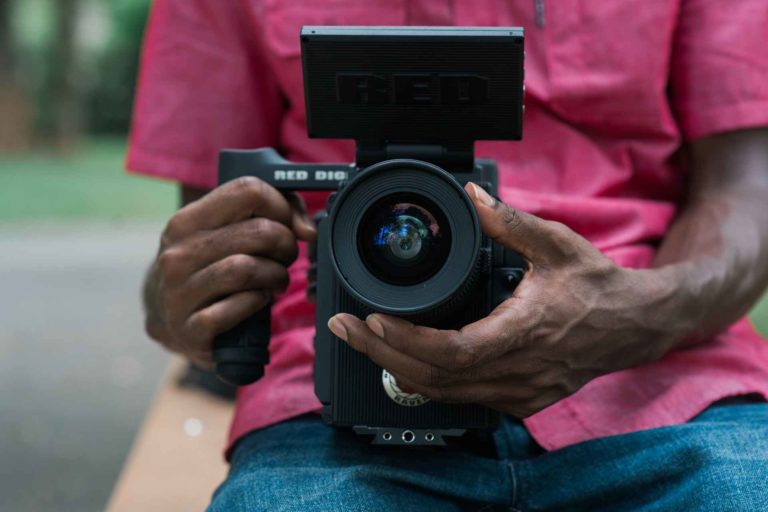How to become a professional Photographer

We’re now in a digital era, where photography is more than just a passion, hobby, or leisure activity. It’s now a standalone professional career and business that you can make a living from. In this post, you will learn how to become a professional photographer.
Steady your face and let’s take some pictures.
How to become a professional photographer and make money
Follow these steps to become a professional photographer:
1. Get the right photography education
The world of photography education is voluminous. This makes photography one of the few professions where structured training is not mandatory.
You can learn, practice, and figure out things yourself without enrolling in any formal educational institution (although that would help).
There are plenty of ways to learn the photography profession. We have many specialist online courses and independent workshops. These online courses will give you a certificate at the end of your photography program.
Preferably, you can go formal. You can start by enrolling in an art school, photography or university. Associate degree courses usually last for two years, after which you’ll obtain an Associate Degree in Photography.
You can also enroll for a four-year course and obtain a Bachelor of Fine Arts degree in Photography. From there, you can run a master’s program, after which you will bag a Master’s Degree in Photography or a Master’s of Fine Arts.
2. Get some photography work experience
Although you have a good education in photography, you can’t just go out there and start telling every potential client that you’re now a professional photographer.
You need to get your hands busy and get some work experience. Highlight the notable vacancies around you and apply for a photography job as an intern. With time, you’ll have hands-on experience that you can’t get from formal learning.
Very soon, you’ll stop being an intern and be promoted to an assistant. During your internship period, you should also keep an eye out on how a photography business is run, how pricing is calculated, and how to deal with clients.
3. Narrow down your area of specialization
Formal or informal education, in addition to an internship, will give you a good view of the photography profession. However, you’ll need to find a photography genre or niche that you enjoy, and you’ll focus on it.
Here are some photography fields you can specialize in:
- Architecture
- Commercial
- Events
- Family
- Fashion
- Fine art
- Forensic
- School
- Wedding
- Wildlife
4. Get the right set of photography equipment
If you’re on a budget, you can start small by getting fairly-used photography equipment that is still in good condition.
Alternatively, you can buy new cameras that are slightly older models, since they’ll come at a reduced price. Ensure you collect equipment based on the photography niche you’re focusing on.
Buy lenses only after doing some research and figuring out which one(s) will serve you most working conditions. And remember, photography is not a beauty contest.
While you need standard and quality equipment to give your photography profession a boost, you don’t need to break the bank and buy all the fancy cameras you come across.
5. Set your photography pricing
You’re now about to step your feet into the commercial world. From now on, no more free work (unless in a few situations where you want to do some charity).
Although it’s good to have standard pricing, you should be flexible and have a price range. Although it usually helps to attract potential clients, lowering your price too much can have a negative effect on your photography profession or business.
In marketing, there’s something called value pricing. This lets us know that customers are tricky, and expensive products automatically feel more valuable. If you make your photograph too cheap, potential customers may question its value.
Don’t just set a price range in your head or arrive at a price based on what other guys are charging. To make good money while keeping your photography business healthy, you should calculate all your costs and estimated profit.
6. Start monetizing your photography career
Here are 7 ways in which you can monetize your photography profession.
#1. Stock Photography
The demand for quality images is never ending, at least not anytime soon. Content marketers need beautiful images for their articles, graphic designers need specific images for certain designs, authors need book covers and so on.
You can find customers on photography sites like Shutterstock and Dreamstime.
Although you won’t get much money on each sale, you’re allowed to upload a large selection of images. That increases your chances of selling in a crowded field.
You may also like: Where to sell photos online and make money
#2. Fairs
You can attend fairs, pay for a spot to set up your photography equipment, get a tent and shoot. However, you’ll need to be fast and flexible, as you’ll be shooting many people (including impatient ones) while also printing in variable sizes.
#3. Other ways
- Promoting your photography business on social media
- Printing out and selling copies of your portfolio
- Creating and running a photography website
- Writing an eBook
7. Build your photography portfolio
Your portfolio should include a collection of only your best work, and potential customers can use it to gauge your so-called photography skills.
Many photographers now have a professional website or landing page where they upload their best pictures (with a little bit of copywriting and SEO).
You should apply these tips when building your photography portfolio:
#1. Be a strong critic
You should always get a second opinion from other photographers before you include any photo in your portfolio.
#2. Pay attention to fine details and be reachable
What things will you look for if you want to hire a professional photographer?
Ensure all your portfolio images are clearly displayed. You should also include your contact details, especially your email and phone number.
#3. Connect with your audience
Don’t go off shooting random images and including them in your portfolio. The fact that it has nice colours and lighting doesn’t make it a great work of art.
Connect with your audience and send a message. Your portfolio should be a reflection of the type of photography work you want to do.
Conclusion
The market for professional photography is gradually reducing every day. Payments are getting smaller since there are now lots of photographers like you out there. As a result, making a career out of photography demands that you stand out in some way.
Develop your own photography styles, know how to use lighting, be professional and always deliver your work on time. Apply these tips, and see how the photography profession can be interesting despite being challenging.
Don't miss a thing. Follow us on Telegram and Follow us on WhatsApp. If you love videos then also Subscribe to our YouTube Channel. We are on Twitter as MakeMoneyDotNG.





